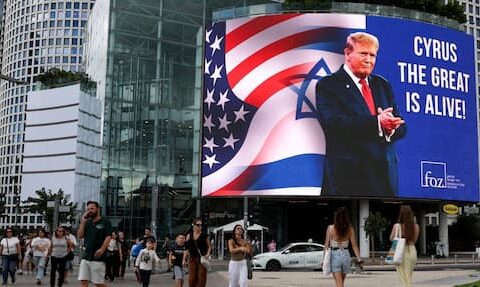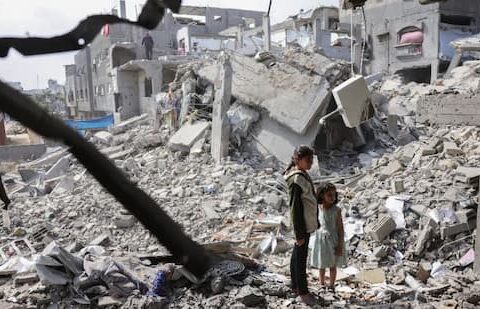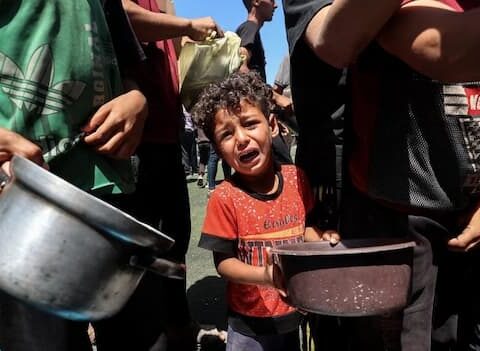As the Saudi-led coalition continues to drop bombs on Houthi targets in Yemen, there are several points and questions that emerge from behind the narrative of ‘Operation Decisive Storm’.
Yes, this is a proxy war between between the Saudi-aligned powers and Iran and yes, Iran has supported the Houthi rebels in Yemen; but there might be more going on than that.
Within just the first few hours of these current Saudi-led attacks in Yemen, the raids hit positions in the country’s capital Sanaa and reportedly flattened a number of homes near the international airport — killing at least 18 civilians and wounding 24 others, according to Yemen’s Health Ministry. Saudi-owned Al-Arabiya News reported that the kingdom had deployed 100 fighter jets, 150,000 soldiers and other navy units in what is being called Operation Decisive Storm.
Just days before the Saudi bombing operations began, US officials confirmed Washington had evacuated its remaining personnel from Yemen, including about 100 special operations forces, because of ‘deteriorating security’. This withdrawal marked a further reversal in America’s longstanding operations against Al-Qaeda in Yemen, which just recently President Obama had been declaring a great success.
But then those kinds of grand statements utterly divorced from reality are to be expected; we could all laugh at George W. Bush’s statement about the great “success” of the Iraq War or Hillary’s congratulations to Libyans for their ‘great victory for democracy’ in the 2011 ‘uprising’, were it not for the fact that none of of is funny.
Most extraordinary of all, The Washington Post reported on March 17th that the Pentagon had ‘lost sight of’ some 500 million dollars worth in ‘counter-terrorism aid’ given to Yemen. That’s quite a big thing to have ‘lost sight of’.
Those with reasonably-functioning memories will recall how reminiscent this might be of ISIS/ISIL’s appropriation of millions of dollars’ worth of American military hardware at the outset of their invasion of Iraq last summer – something that the US appeared to do nothing to prevent.
Again, let’s just process this information: “the Pentagon is unable to account for more than $500 million in U.S. military aid given to Yemen.” This means essentially military equipment and offensive weaponry, among other things. Where has all of that stuff gone?
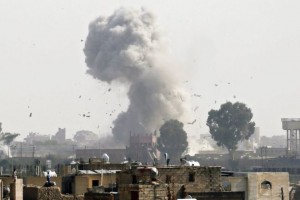
Is, in fact, all of this missing US military aid due to end up in the hands of Al-Qaeda, just as that vast amount of US military property ended up in the hands of ISIS/ISIL last summer? And is this Saudi-led campaign in the process of essentially strengthening Al-Qaeda in Yemen?
After years of deep involvement in the country (under the auspices of a prolonged ‘counter terrorism’ programme), the US decided to withdraw its personnel from Yemen just days before the Saudi-led attacks begun. This, again, is reminiscent of the US withdrawal from Iraq: after a decade of interference in Iraq, US military personnel were completely withdrawn from the country, and almost before those personnel had even set foot back in the Land of the Free, the psychopaths of ISIS/ISIL were riding in-convoy into the freshly evacuated (and defenseless) Iraq from Syria and began an unprecedented reign of terror.
The US and its allies have subsequently shied away from putting ‘boots on the ground’ in Iraq to stop this reign of terror, despite the fact that it had ‘boots on the ground’ for 10 years in Iraq right up until just before the ISIS/ISIL psychopaths moved in.
So again, is Yemen being handed to Al-Qaeda on a plate just as Iraq was handed to ISIS/ISIL (which, as it happens, was believed by numerous analysts to in fact simply *be* ‘Al-Qaeda in Iraq’ anyway with just a simple name-change)?
Is the Saudi-led coalition now bombing Yemen in order to protect Saudi Arabia’s and America’s Al-Qaeda asset in the region? In fact, a more accurate description than ‘protecting’ Al-Qaeda might be ‘saving’ Al-Qaeda in Yemen.
Al-Qaeda in the Arabian Peninsula (AQAP) is held to be the most active remaining strain of the extremist network; where Al-Qaeda has been in decline elsewhere and ISIS/ISIL has been in ascendancy as the dominant new ‘brand’ of militant Islamism, Yemen and AQAP has remained the Al-Qaeda brand’s key stronghold. And in addition to Al-Qaeda, ISIS/ISIL also has a presence in Yemen now, which has been established since December and which complicates the scenario even further, making it even more dangerous a situation.
You might recall that, among other things, the recent Charlie Hebdo attack was claimed to have been carried out by the Yemeni AQAP, with also one of the Kouachi brothers having allegedly cited Anwar al-Awlaki as a personal mentor. Anwar al-Awlaki, killed in a US drone-strike in Yemen in 2011, was the famous ‘American’ Al-Qaeda operative, known to have been a CIA asset and known also to have dined at the White House.
Let’s look at this situation in Yemen properly; the Houthi rebels, claimed to backed by Iran, are, among other things, engaged in campaign *against* Al-Qaeda in Yemen. The recent Houthi siege of the presidential palace, which was a precursor to Saudi intervention in the country, was predicted by analysts to be a move foreshadowing an even more important showdown set to play out 74 miles east of the capital Sanaa and in the Al-Qaeda stronghold of Mareb, where the bulk of the country’s gas reserves are concentrated. Two things immediately become clear when we observe what’s now happening; (1) the Saudi-led assaults on the Houthi rebels will vastly diminish the Houthis’ ability to combat Al-Qaeda or to decisively push Al-Qaeda out of the picture (as was reportedly on the verge of happening), and (2) that missing $500 million dollars’ worth of US military aid may be finding its way to Al-Qaeda in the Arabian Peninsula and allowing Al-Qaeda to launch a major offensive against the Houthis at some time in the near future and make itself dominant in the country.
So while the Saudi-led attacks, fully backed by the US, can be said to be aimed on one level at ‘maintaining stability’ and at curbing Iranian interference, these attacks are also attacks targeted at the enemies of Al-Qaeda in Yemen; and this coinciding with the Jar Jar Binks style ‘loss’ of $500 million worth of American ‘military aid’ that is either going to end up in the hands of the Houthi rebels or of Al-Qaeda. If I was a betting type, I’d put my shekels on AQ being the beneficiaries of that whopping big whoopsy.
And if you think the idea of the US and its allies militarily intervening to defend Al-Qaeda is dubious, just cast your mind back to the farce (sorry, I mean ‘intervention’; no, sorry, I mean War Crime) in Libya in 2011, where NATO forces destroyed Libya’s infrastructure, assassinated its leader, and essentially provided air-support for the Al-Qaeda takeover of Libyan cities and territories: don’t be naive about any of that – that Al-Qaeda takeover of Libyan towns and cities was *planned* and abetted by NATO.
The fact that just in the last couple of days it has emerged that Al-Qaeda has managed to break out an unspecified number of its members from a Yemeni prison (under the chaotic conditions caused by the Saudi air-strikes) clearly demonstrates the level of danger in Yemen while these Saudi-led attacks are going on: those with good memories might recall that incidents very similar to this occurred in Libya in the early days of the 2011 uprising, where there were orchestrated jail-breaks of Al-Qaeda and other terrorist prisoners that the Gaddafi regime had behind bars.
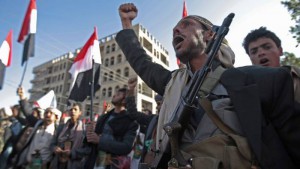
But there’s still more to this situation now in Yemen. A story on RT’s website reports that the Houthi Shiite rebels had just obtained secret Yemeni intelligence documents with details about US-backed counter-terrorism operations, including the names and locations of informants, this being originally reported in the Los Angeles Times which cited American officials as the source.
The documents were apparently stolen when Houthi fighters took over the office of Yemen’s National Security Bureau in the country’s capital Sanaa, which was closely cooperating with the CIA on various ‘anti-terror missions’. The compromised files reportedly influenced President Obama’s decision to evacuate remaining US personnel from Yemen last weekend, including the 1,000 special operations forces.
The evacuation from Yemen of course seriously undermines America’s operations against Al-Qaeda in the region and might even be perceived as quitting the job; this being after years of repetitive drone-strikes and targeted assassinations that have effectively turned half of the civilian population against the US and its allies due to the various instances of civilian casualties and ‘collateral damage’ (as is the case in Pakistan). This report about the seizure of the National Security Bureau building emerged mere hours before Saudi Arabia announced it had launched military operations against Yemeni Houthis.
A question arises: did these rebels who seized the office discover something particularly damning in regard to the US and the CIA’s operations?
Something that provoked the rapid and complete withdrawal of US personnel and the immediate, surprise bombing operations by the Saudis and allegedly nine other countries? Given that there could be any number of particularly dirty CIA secrets regarding its activity in Yemen and in the broader region and its dealings with Al-Qaeda, one has to wonder. There is also the implication that intelligence gleaned from this raid by the Houthis might have also found its way to Tehran.
This situation now also has the potential to escalate into something much broader and much worse. It’s already further destabilising the already destabilised Middle East, but direct Saudi-led military assaults are a major provocation against Iran at a time where Iran is seen to be making some progress towards a reconciliation of sorts with the US.
The only thing that could be argued is that this destructive bombing campaign is perhaps aimed at maintaining stability in the region and thus is invested in propping up the Saudi regime and trying to curtail the rise of Iranian influence for that reason. However, the ‘maintaining stability’ argument falls completely flat once we remind ourselves of what NATO did in Libya, what the US-led coalition did in Iraq and what the various states covertly tried to do in Syria. All of that was the exact opposite of ‘maintaining stability’ and was in fact a policy of engineering chaos and conflict.
The US invaded a country – Iraq – and aggravated a sectarian conflict, giving excessive power to one sect over the other, and then left: by any logic, that is an utterly insane policy and it pretty much invited the kind of horrific backlash we’ve since seen in Iraq.
Iran has condemned the Saudi intervention in Yemen, warning against “short-sighted games” by outside countries that would only lead to “bloodshed” and further loss of life. The Iranian Foreign Minister Mohammad Javad Zarif said, “Military action from outside of Yemen against its territorial integrity and its people will have no other result than more bloodshed and more death.” Calling for “urgent dialogue” among the Yemeni factions, he added “We have always warned countries from the region and the West to be careful and not enter short-sighted games and not go in the same direction as Al-Qaeda and Daesh,” he said.
As Yemen now becomes the latest land in the region to slide into civil war, what is entirely acknowledged by all parties is that this is another proxy war between Iranian/Shiite influence and Saudi/Sunni influence in the region, with the civilians caught in the middle.
This now becomes the fourth simultaneous civil war going on in the region along with Syria, Iraq and Libya, with also Egypt arguably already sliding towards its own internal sectarian crisis. A better reading of the situation, however, would be view to all of these crises as facets of the same broader ‘civil war’ arguably occurring within Islam between the Sunni and Shia sects and within the regional Geo-political landscape between Saudi influence on one hand and Iranian on the other.
We’ve already seen how much spillover from the ‘intervention’ in Libya impacted life in Syria and how much spillover from the Syria conflict carried into Iraq, for example; the fighting in Yemen could easily spill over into neighbouring countries including Saudi Arabia itself, which could even eventually threaten Islam’s Holy Cities. The unfettered, loose canon that is ISIS/ISIL would also have the potential to involve itself in these conflicts and make matters even worse.
These Proxy Wars have become an absolute catastrophe.
What Iran is doing in Yemen isn’t right – wouldn’t be right, if all things were as they should be – but virtually all other powers involving themselves in the Middle East (Saudi, the Gulf States, Israel, the US, NATO) have been arming and aiding proxy militias and terrorists, almost exclusively Sunni/Salafist in nature, all of which are a direct threat to Iran and to Shia populations and interests. In this context, Iran is left with practically no choice but to do the same. It isn’t right, and it isn’t in the interests of Yemen as a country or the people, but this is the situation that has been created in the Middle East and Iran can be said to be merely playing by the rules that the Saudis, the Gulf States, the US and others have created.
Of course there’s even more going on here too and, as ever, it may involve natural resources. This piece by F. William Engdahl should be read in its entirety, providing a fascinating insight into Yemen’s strategic and resource-based interest to various powers. In 2010, Engdahl wrote: ‘In addition to its geopolitical position as a major global oil transit chokepoint, Yemen is reported to hold some of the world’s greatest untapped oil reserves. Yemen’s Masila Basin and Shabwa Basin are reported by international oil companies to contain “world class discoveries.” France’s Total and several smaller international oil companies are engaged in developing Yemen’s oil production. The evidence suggests that the Pentagon and US intelligence are moving to militarize a strategic chokepoint for the world’s oil flows…’
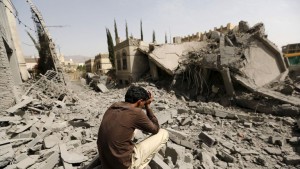
Of course, none of this is of any help to the average Yemeni citizen, stuck in poverty and with no one seeming to be acting to improve their quality of life or the country’s economy, and now facing a major humanitarian problem. Yemen is a dismally poor country; the poorest in fact in the Middle East, despite its apparent richness in natural resources. Those resources are almost certainly a factor in the chaos sweeping the country.
It also becomes increasingly difficult to look at these situations – in Yemen, in Syria, in Iraq, and the broader regional struggle between the Saudis and Iranians – and not see the actualization of the famous Albert Pike prediction concerning the Third World War, which would be brought about by deliberate agitation of the Zionists and the Muslim world. Some refute the legitimacy of the influential Freemason Albert Pike’s letter, considered by some to be a forgery; but real or not, it seems to very neatly foresee what would come to pass over the course of three global conflicts, two of which have already occurred.
Again, looking at US policy in Iraq, it seemed more or less *designed* to agitate, amplify or otherwise play upon the sectarian divisions between the Sunni and Shiia populations: creating that situation may indeed have been one of the reasons the US invaded Iraq in the first place. Subsequent inconsistencies and lapses in logic regarding policy in the region might be viewed in the same way; fighting Al-Qaeda in Yemen while arming and aiding Al-Qaeda in Libya, fighting (or so it is claimed) Islamic State militants in Iraq while funding Sunni rebels and extremists in Syria, empowering and propping up Shia forces in Iraq while attacking Shia groups in Yemen and demonising Iran... the list of illogical, contradictory policies and actions goes on and on.
Which either suggests an extraordinary level of incompetence or it suggests an orchestrated agenda.
The US inexplicably installed a Shia government in Iraq to govern a Sunni majority; more than that they trained and funded what were essentially Shia ‘death squads’ to terrorise Sunnis in Iraq (at the worst stage of which some 3,000 civilians a month were turning up dead on the streets), creating a sectarian war in the country.
It’s clear that a sectarian conflict was orchestrated in Iraq and probably in Syria too. Yemen looks as if it is being used in the same way. In terms of ‘playing off’ the Sunni and Shia populations against each other in various Middle-Eastern countries, it serves to keep the region and the societies in a continual state of destabilisation, inviting continual foreign intervention and involvement and ensuring that those societies don’t have the means to prosper, to build or to control their own resources: any such society that takes control of its own destiny and attains anything approaching self-sufficiency is sabotaged from the outside and put back into a state of dependency – thus the ‘intervention’ in Libya and the proxy war in Syria.
And now the poor people of Yemen are on that list too.

